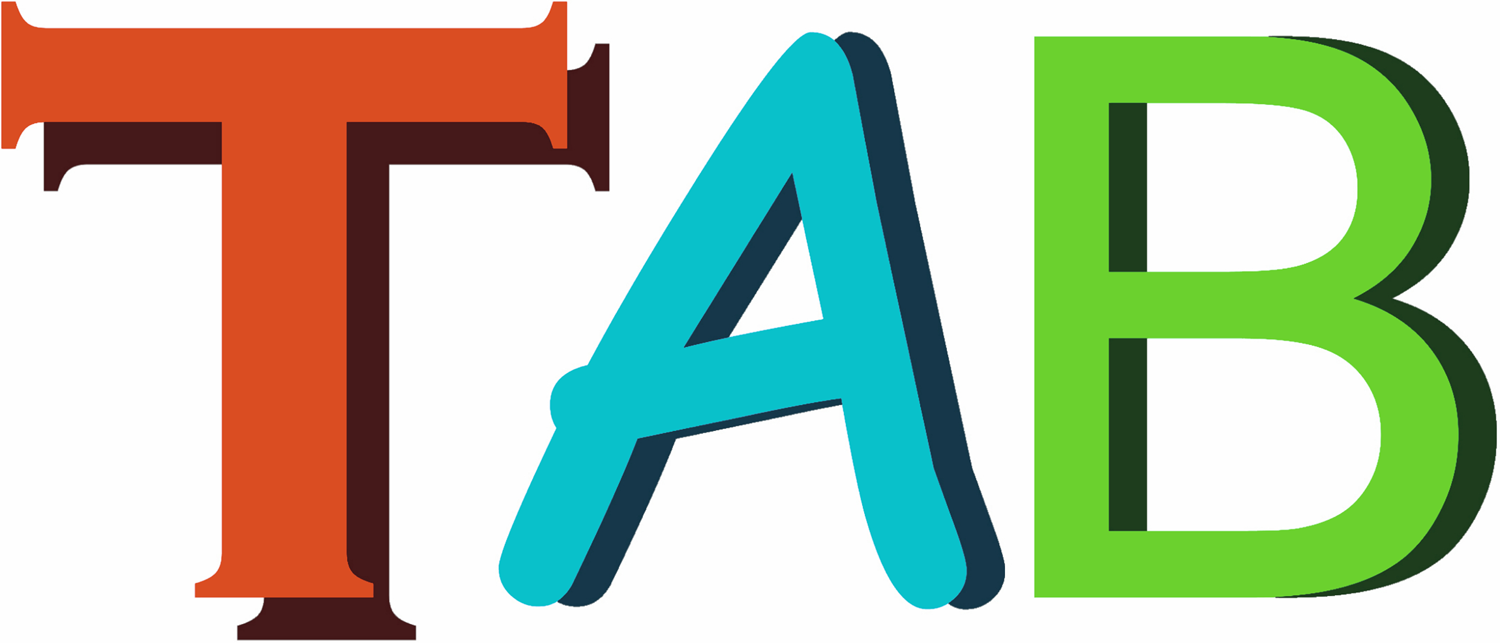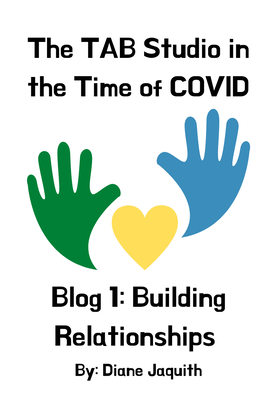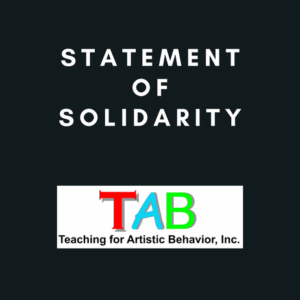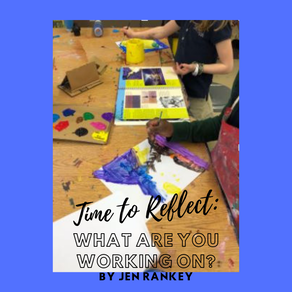In the last TAB blog post, Julie Toole emphasized that strong communities and relationships are essential to learning. Relationships and community come first – TAB teachers innately understand this – and building these foundations starts on Day 1. Collaborative studio communities will grow and develop as the school year progresses, but first, teachers need to cultivate students’ trust, whether in a classroom or virtual space. This year, TAB teachers will remain alert to signs of trauma from the double pandemics – COVID-19 and the growing visibility of systemic racism – and be vigilant to the needs of their students. By starting the year with compassion and grace, TAB teachers set the tone for safe, brave spaces where students can thrive.
What does this look like in 2020? I spoke individually with a small number of TAB teachers from around the country during the summer to catch their thoughts on teaching this fall, and I’ll share their thoughts and ideas in the next few blog postings. At the time of our conversations, many were already into the school year, some with remote starts and some in hybrid learning environments. Three themes emerged in these conversations: relationships, community, and advocacy, and I’ll tackle each of these in the coming posts, starting with relationships below. Their words of concern, advice, and plans may be inspiring to other TAB teachers during this unprecedented time. I thank each of these teachers for their generosity, compassion, and advocacy on behalf of the thousands of children they teach. To quote Texas TAB teacher Natalia Dominguez:
Treat everyone with dignity and treat the situation with dignity. Give students grace. That looks different for everyone.
Teachers interviewed for this essay:
Carla Bolden, Boston, MA Public Schools, elementary
Remote start, combined 1.0 FTE visual art and instructional technology
Clark Fralick, New Palestine Public Schools, IN, elementary
Hybrid on cart, 550 students
Clyde Gaw, New Palestine Public Schools, IN, high school
Hybrid, four 70-minute classes daily; 100 students
Jaimee Taborda, Oxford, MA Public Schools, high school
Remote start, course assignment undetermined
Natalia Dominguez, Fort Worth, TX Independent School District, elementary
Remote start, K-5, 750 students, 30 minutes per week per class
Roni Rohr, Santa Fe, NM Independent School District, K-8
Remote start, grade 6 daily, grade 7 four days/week, grades K-5 undetermined
Stacey Parrish, Saint Andrews School, FL, middle school
Remote start, five 70-minute sessions per class every two weeks
Teachers sharing resources for this essay:
Jean Freer Barnett, Taylor High School, Taylor, TX
Jessi Ruby, Elementary, Weld County School District RE-1, CO
Julie Toole, K-8 Baker Demonstration School, IL
Kelly Beach, Middle School, 27J Schools, Thornton, CO
Melissa Purtee, Apex High School, Apex, NC
BUILDING RELATIONSHIPS: QUOTES FROM TAB TEACHERS
- What TAB really does is humanize. TAB provides learning opportunities for children to develop their intellects in an inclusive environment that supports open participation in shared or self-directed activities. Clyde Gaw (high school, IN)
- Before school starts, I know to reach out to families on materials they have, technology they have, and applications they are familiar with, so I know – as their art teacher and tech teacher – what I need to do for the whole school. [I will] schedule a date and say, “On this date, come to my studio, I am going to offer online training on how we use the platforms before we get deep into the school work.” I want to figure out in advance what the problems are before we start, by getting the kids to get all of the stuff into one platform. – Carla Bolden (elementary, MA)
- My focus [starting out] isn’t on teaching art, it is trying to build those relationships that we lost and, at the same time, making sure that everyone has access to the technology that they are given. That’s pretty much it. – Clark Fralick (elementary, IN)
- I feel relieved that our plan right now has a remote start. Relieved and also stressed because how do you build relationships with kids in remote learning while also honoring who they are as human beings? I have seen all these rules, like, “Make sure you are sitting up straight. No lying down. Make sure you are wearing pants.” All these ways that people want to control kids. I don’t want to control kids. – Jaimee Taborda (high school, MA)
- If they are creating anything, that’s what matters – the act of creation and self-care. Who cares what the product looks like, especially now – it doesn’t matter. Slow down for five minutes and do a doodle. Just make something and focus on the therapeutic aspects of creation, Focus on the process and not on the product. Offer kids options on how to engage in artmaking but I wouldn’t make things required – that’s the thing that I am going to remember from the spring – flexibility. Flexibility is key. Focus on the creation. – Jaimee Taborda (high school, MA)
- If I am asked to do something in school and it is not authentic – I won’t compromise. That’s the piece of the trust. Students know they can come to me and talk to me about situations where they are being discriminated against and being bullied. They know I am not going to school them. The kids talk to me that way because they don’t have a lot of people they can trust.
- The cool thing [last spring] was that I got to communicate with kids I couldn’t really reach in the studio. These were kids that were either too shy or it was less authentic [to be] showing up at my classroom and making art just because they were supposed to make art at ten o’clock. For some students, it was finding a way to add art into work that they were already doing. It was approaching how art could connect with each individual, the way they could use art in their lives. It didn’t have to just be making art for art’s sake. That’s how [remote studio learning] authentically connected with more students. There were these kids – I had tried but we never connected and suddenly we had emails going back and forth – and their parents were emailing me. – Stacey Parrish (middle school, FL)
- It may not seem like remote is the best for building relationships/community with our classes as a whole group, but that doesn’t mean teachers can’t build one-on-one relationships with their students through our LMS, Google Classroom. I plan on using Flipgrid to help learn more about my students. I will include my face in all my videos – I’ve learned to float my video recording of me speaking over my screen recording using Quicktime. Or I will use a program I discovered called Loom, it also allows the computer camera to hover in front of a screen record. (It’s not perfect, but my students will get to see all the fabulous facial gestures and hand waving I do as I talk–and that is such a huge part of who I am, lol.) I also plan on utilizing an “autobiographical artwork” activity that Melissa Purtee so graciously shared. Lastly, in the spring I found in the that replying or leaving comments with students’ submissions is really helpful in growing and keeping relationships and communication. – Jean Freer Barnett (high school, TX) Read more about Remote Asynchronous TAB on Jean’s blog.
BUILDING RELATIONSHIPS: ACTIVITIES FROM THE TAB STUDIO
- I am going to start my year off with norms, show a set of civil norms and say. “What do you think of these? Let’s have a discussion around this.” It’s never too early. Then I am going to ask “How was your summer? What did you do? What do you want to learn?” I will have a white board behind me to jot down what younger students are saying. Older kids can put it in the chat and I can just copy the chat. I am not going to worry about teaching art in my first 20, 30, 40 minutes with my students. – Roni Rohr (K-8, NM)
- First and foremost, I believe that including students in this process [of creating norms] will help in developing relationships with them. I found that the first time we did this process my students were surprised. Why? I realized that it was not usual for a teacher to ask them for their opinions and ideas. (This practice is becoming more recognized with responsive classroom, SEL, and other education trends.) This is a great starting point to let students know that their voices matter. They will see that you appreciate and care about them. – Jessi Ruby (Elementary, CO) You can see Jessi’s blog post here: Studio Norms are Essential to Every Choice-Based Studio and also here: Primary Artists
The first day, we usually fill out a little worksheet:
- This is my name …
- These are my pronouns …
- Something that makes me happy is …
- Something that makes me mad is …
- I respect people who …
- Art to me is …
It is an inventory of different things and a good way for me to be able to know right away if a student is identifying differently than what appears in Powerschool. Then we sit in a circle and go around and share two of the 10 things that they respond to. They share what they want to be called and one other thing. If you feel comfortable sharing your pronouns, you share your pronouns. If you don’t want to share that you choose something else. – Jaimee Taborda (high school, MA)
- I designed this lesson (see image) as a way to start building relationships with my high school students as digital learning starts for us. Students will share about their work in small groups to connect with others. Based on Zaretta Hammond’s Culture Tree from Culturally Responsive Teaching and the Brain and shown with my example that I’ll share with each class. In Google Classroom they will post under the assignment tab to share with me for in-progress feedback. I’ll have them screen share in a small group Google Meet or I may just put them into slideshows. – Melissa Purtee (high school, NC)

Stay tuned for the remainder of this blog series, where I’ll share thoughts from TAB teachers about building communities and TAB advocacy.




